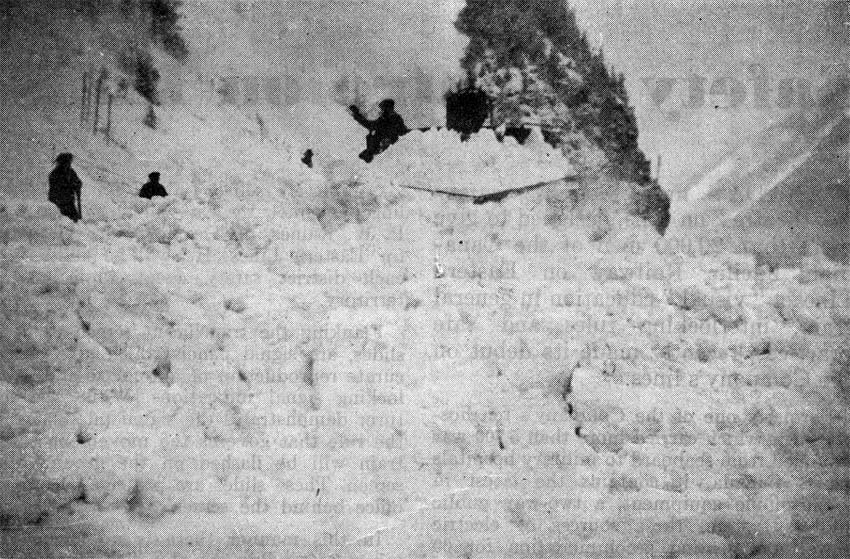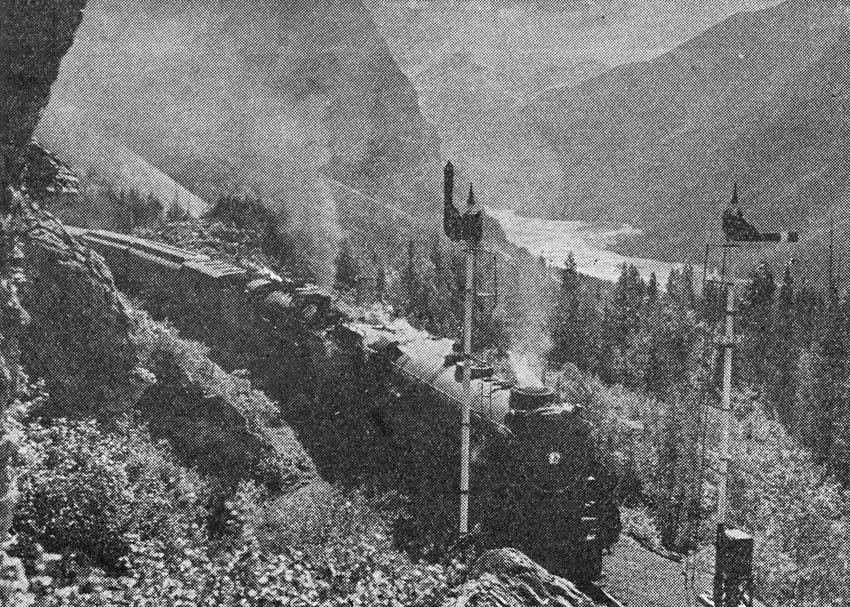
Canadian Pacific Staff Bulletin - September, 1946
Trainman L.N. Cibart Tells How
Speculation Plays Big Role in
Estimating Time For "All Clear" Signal

On the morning of 23 Mar 1946 "the Big Hill" east of Field, British Columbia, experienced one of the big and more spectacular slides of the season.
It was the type of slide Company officers and men of the Alberta and British Columbia districts cope with in the course of moving traffic over the most difficult piece of single track in the west.
Things didn't look too good when the watchman phoned in the news that a slide about 70 feet long and 15 feet deep had come down at mileage 134, Laggan subdivision.
When the slide was reported at about seven o'clock the crews had been ordered for the first and second Seaboards, as well as Number 2. That meant that three train crews and eight engines and crews were tied up, each Seaboard having two pushers and a pusher for Number 2. The chances of several thousand tons of "Red Card" lading making the desired connections were rather slim about this time.
Action quickly becomes evident in the terminal of Field when the line is blocked. Conductor Johnston and crew, who had been ordered for one of the Seaboards with pusher engine 5803 and Engineer Moore, were at the scene of the slide by 07:40.
The snow plow, in charge of Foreman W. Rande was ready, and upon arrival, immediately made an experimental punch into the slide to get the feel of it.
With this information at hand, a short conference was held between Conductor Johnston and Mr. Rande. Drawing on past experiences, and estimating the ice content of the slide at less than 20 percent, they set the time the main line would be clear at 08:50K. This time, Conductor Johnston phoned in to the train despatcher as the figure he could use in putting out time to the various trains.
That is always the worst time at a slide, when a figure has been given and the work yet to be done. Just a simple case of "the suspense that gets 'em." Each time the 5803 backed up for a fresh run at the slide, all concerned had their fingers crossed, as a large boulder, ice, or timber gathered up during the slide's rapid journey down the mountainside would, if very large, upset the calculations over the entire division.
From start to finish of the operations, there were no obstructions encountered, and Number 2 left Field at 09:05, followed on the block by the Seaboards.
By 10 o'clock, not even the echo of a locomotive exhaust could be heard to remind the world that nature's
mighty challenge had even caused a pause in the never-ending flow of traffic up and over the Great
Divide.

This Staff Bulletin article is copyright 1947 by Canadian Pacific Railway Limited
 and is reprinted here with their permission. All photographs,
logos, and trademarks are the property of the Canadian Pacific Railway Company.
and is reprinted here with their permission. All photographs,
logos, and trademarks are the property of the Canadian Pacific Railway Company.